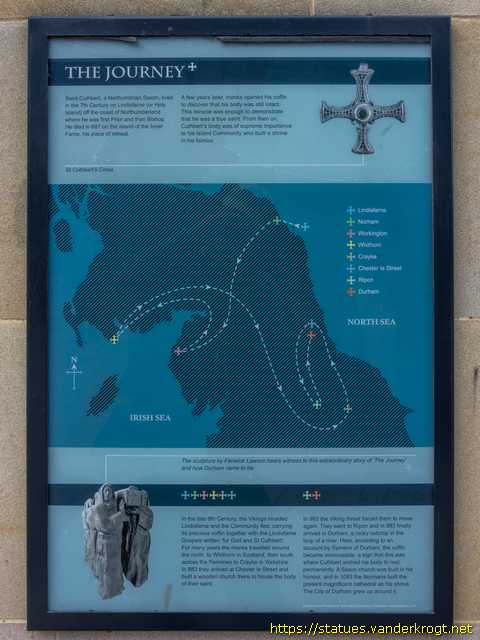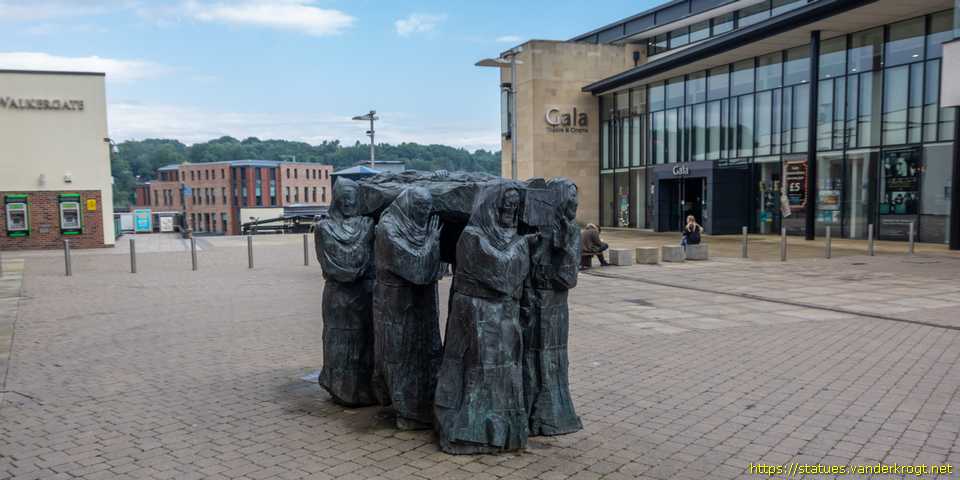

Statues - Hither & Thither |
Site Search:
|
|
Durham
Durham, County North East England Millennium Square |
The Journey |
Fenwick Lawson
2008 |


Sculpture of six monks carrying the coffin with the body of St. Cuthbert.
|
The Journey by Fenwick Lawson unveiled by HRH The Princess Royal 26 September 2008 |

|
THE JOURNEY Saint Cuthbert, a Northumbrian Saxon, lived 1n the 7th Century on Lindisfarne (or Holy Island) off the coast of Northumberland where he was first Prior and then Bishop. He died in 687 on the island of the Inner Farne, his place of retreat. A few years later, monks opened his coffin to discover that his body was still intact. This miracle was enough to demonstrate that he was a true saint. From then on, Cuthbert's body was of supreme importance to his Island Community who built a shrine in his honour. In the late 9th Century, the Vikings invaded Lindisfarne and the Community fled, carrying its precious coffin together with the Lindisfarne Gospels written 'for God and St Cuthbert'. For many years the monks travelled around the north: to Whithorn in Scotland, then south across the Pennines to Crayke in Yorkshire. In 883 they arrived at Chester le Street and built a wooden church there to house the body of their saint. In 993 the Viking threat forced them to move again. They went to Ripon and in 993 finally arrived in Durham, a rocky outcrop in the loop of a river. Here, according to an account by Symeon of Durham, the coffin became immoveable, a sign that this was where Cuthbert wished his body to rest permanently. A Saxon church was built in this honour, and in 1093 the Normans built the present magnificent cathedral as his shrine The City of Durham grew up around it |

Your banner here? Click for information.